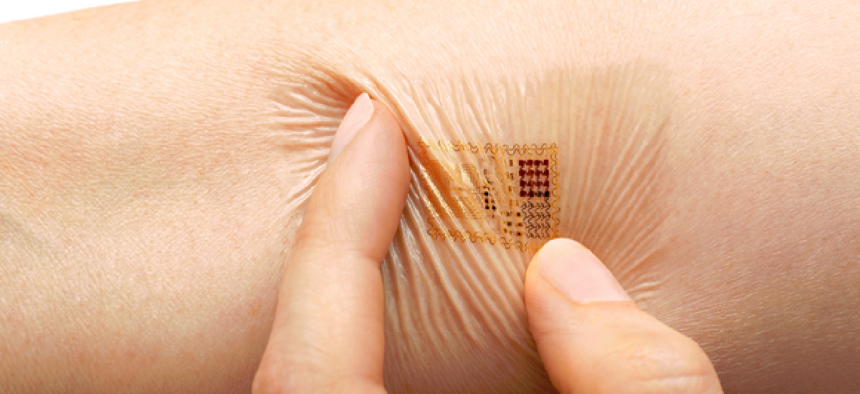Air Force successfully tests wearable biometric sensors


Connecting state and local government leaders
A flexible and wearable patch, the BioStampRC monitors performance and body signatures from electrocardiogram to temperature.
The Air Force Research Laboratory’s Tech Warrior exercises give airmen a chance to test new equipment and allow scientists and engineers to see how their lab technology performs in the field.
At the most recent exercise, one of the technologies tested was the BioStampRC Wearable Sensing Platform, used to measure and monitor biomedical data. A flexible and wearable patch, the BioStampRC monitors performance and body signatures from electrocardiogram to temperature, Rajesh Naik, chief scientist of the 711th Human Performance Wing of the AFRL, told GCN. It then uses Bluetooth to send data to a handheld platform.
These capabilities give commanders better information on the health of their airmen in the field, Naik said, allowing them to evaluate a warfighter’s wounds on the battlefield and help them prioritize who needs urgent care. The technology would not only monitor people wounded in the field but it also has the potential for use in the larger force for wellness management, he noted.
But for Naik, it’s about gaining meaningful data that can be used to increase performance and add context to daily activities. Information obtained from commercial devices, for example, do not produce operationally relevant “actionable” data, he said. Those platforms can count a person’s daily steps but are unable to determine what those steps actually mean. Combining training information and biochemical data would yield a fuller biological and medical picture.
“How do I now take that piece of [performance] data and overlay that [biomedical] information I’m getting? How does that make sense to me, and what is it that I need to do to be better?” he asked rhetorically. “We don’t have that information yet. That’s what we’d like to get to at some point.”
The military already uses biometric devices, but the BioStampRC is smaller and less intrusive than those used in the past.
The data collected from BioStampRC has been scrubbed and is being compared to similar devices. The next step is to measure sweat and lactic acid to see their relationship to fatigue, for example. Additionally, Naik said he’d like to take this device to a larger Air Force exercise to see how it performs.
Naik was pleased with the recent real-world testing, in which copious amounts of data were collected for further analysis. In spring 2016, hundreds of these devices will be tested in an Air Force exercise in an effort to develop a long-term vision for biochemical signals technology that will allow officials to predict if an airman’s stress, fatigue or illness might worsen.




